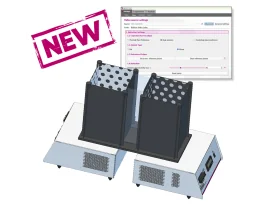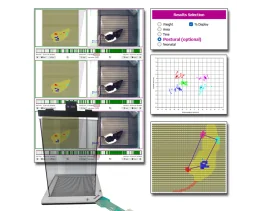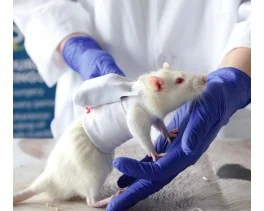Authors
L. Ulmann, H. Hirbec, F. Rassendren.
Lab
CNRS, UMR 5203, Institut de Génomique Fonctionnelle, Montpellier, France.
Journal
The EMBO Journal
Abstract
Prostaglandin E2 (PGE2) is a key mediator of inflammation and contributes to pain hypersensitivity by promoting sensory neurons hyperexcitability. PGE2 synthesis results from activation of a multi-step enzymatic cascade that includes cyclooxygenases (COXs), the main targets of non-steroidal anti-inflammatory drugs (NSAIDs). Although NSAIDs are widely prescribed to reduce inflammatory symptoms such as swelling and pain, associated harmful side effects restrict their long-term use. Therefore, finding new drugs that limit PG production represents an important therapeutic issue. In response to peripheral inflammatory challenges, mice lacking the ATP-gated P2X4 channel (P2X4R) do not develop pain hypersensitivity and show a complete absence of inflammatory PGE2 in tissue exudates. In resting conditions, tissue-resident macrophages constitutively express P2X4R. Stimulating P2X4R in macrophages triggers calcium influx and p38 MAPK phosphorylation, resulting in cytosolic PLA2 (cPLA2) activation and COX-dependent release of PGE2. In naive animals, pain hypersensitivity was elicited by transfer into the paw of ATP-primed macrophages from wild type, but not P2X4R-deficient mice. Thus, P2X4Rs are specifically involved in inflammatory-mediated PGE2 production and might therefore represent useful therapeutic targets.
Source :
http://www.nature.com/emboj/journal/v29/n14/full/emboj2010126a.html

 Douleur - Allodynie/Hyperalgésie Thermique
Douleur - Allodynie/Hyperalgésie Thermique Douleur - Spontanée - Déficit de Posture
Douleur - Spontanée - Déficit de Posture Douleur - Allodynie/Hyperalgésie Mécanique
Douleur - Allodynie/Hyperalgésie Mécanique Apprentissage/Mémoire - Attention - Addiction
Apprentissage/Mémoire - Attention - Addiction Physiologie & Recherche Respiratoire
Physiologie & Recherche Respiratoire




































 Douleur
Douleur Système Nerveux Central (SNC)
Système Nerveux Central (SNC)  Neurodégénérescence
Neurodégénérescence Système sensoriel
Système sensoriel Système moteur
Système moteur Troubles de l'humeur
Troubles de l'humeur Autres pathologies
Autres pathologies Système musculaire
Système musculaire Articulations
Articulations Métabolisme
Métabolisme Thématiques transversales
Thématiques transversales Congrès & Meetings
Congrès & Meetings